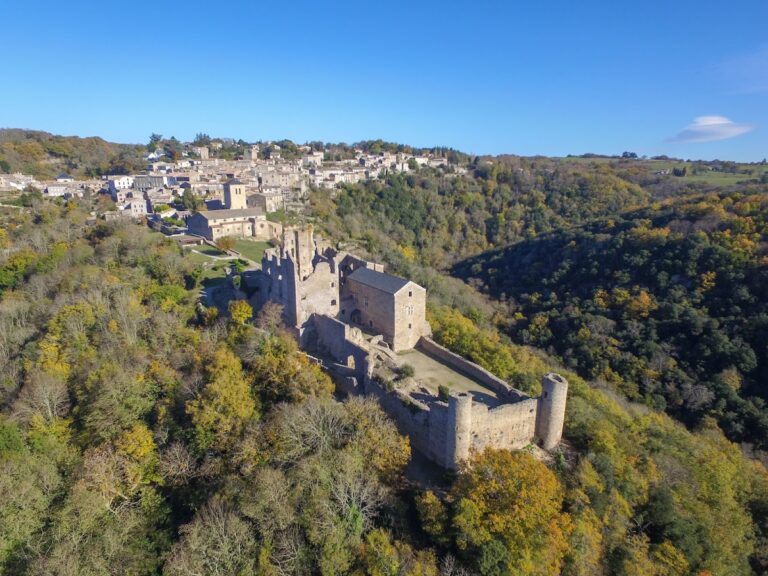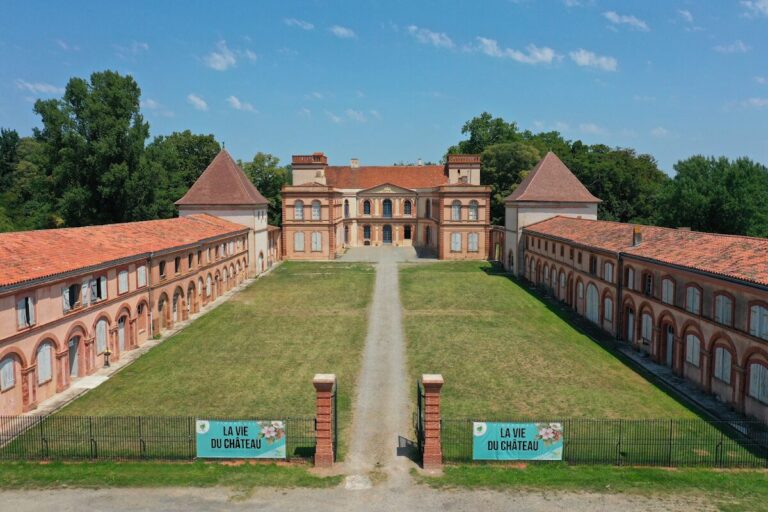Château de Belflou: A Medieval Fortress in Belflou, France
Visitor Information
Google Rating: 4.6
Popularity: Low
Google Maps: View on Google Maps
Official Website: chateaudebelflou.fr
Country: France
Civilization: Unclassified
Remains: Military
History
The Château de Belflou stands in the village of Belflou, France, and was constructed during the late 12th century by medieval European builders. Initially known as Valflor or Saint Félix de Lanès, this site began as a feudal secondary fortress designed to serve local lords in defense and administration.
In its earliest phase, the fortress was centered on a stronghold called a donjon, a type of fortified tower, which later became the castle’s southern square tower. Accompanying this were wooden buildings and a moat filled with water, forming a defensive perimeter. The first surviving written record of Belflou comes from a charter dated 1206, co-signed by the counts of Foix and Toulouse. This document granted the fief to four knights of Saint Germain through Aimeric de Roquefort, the lord of Laurac known for his sympathy towards the Cathar movement, a religious group considered heretical by the Catholic Church.
During the Albigensian Crusade, which aimed to suppress Catharism, the fortress faced drastic upheaval. In 1211, Simon de Montfort’s forces executed Aimeric de Roquefort along with many of his followers, seizing control of Belflou. Afterward, ownership of the castle changed hands multiple times, shifting among crusader leaders, agents serving the count of Toulouse, and representatives of the French crown. Eventually, in 1310, King Philip IV granted the lordship of Belflou to Philippe de Fontanes and his descendants, who retained possession for nearly five centuries.
The castle experienced a temporary occupation by Huguenot forces during the religious wars of the late 16th century, specifically between 1581 and 1582. Later, the French Revolution of 1789 brought significant change: the Fontanes family fled to Switzerland, and the property passed out of their hands. Subsequently, the château came into the possession of other owners, including the noble Calmès family and, more recently, private individuals. From 1948 onwards, the château and its surrounding moat have enjoyed protection as a historic monument, with a formal classification granted in 1989, recognizing its largely preserved medieval defensive architecture typical of the Lauragais region.
Remains
The Château de Belflou presents a well-defined example of medieval military architecture, featuring a compact layout dominated by stone fortifications and a surrounding water-filled moat. The site’s core is anchored by a prominent square tower to the south, originally constructed as a donjon in the late 12th century. This tower retains its original stone structure and served as the fortress’s primary defensive and residential keep.
Surrounding the main tower, wooden buildings once stood within the walls, though these have not survived. The fortress was encircled by a moat filled with water, enhancing its defensive capabilities. Access to the castle was originally controlled by a drawbridge on the west side, which has since been replaced by a small stone bridge, reflecting changes in the site’s use over time.
At the northeast corner of the enclosure, evidence suggests the presence of a second curtain tower, though only traces remain. In the early 16th century, the castle underwent notable enhancements, including the raising and decorative remodeling of the northern stair tower. This stair tower features sculpted busts and gargoyle figures, and its projecting section was altered to provide both practical and ornamental functions.
Throughout the 17th and 18th centuries, modifications focused on domestic comfort and light, with several openings enlarged, especially the southern windows. Additional 19th-century renovations included updates to the north façade and the upper sections of the east wing. A small bridge was also added on the eastern side of the moat, facilitating access to neighboring lands.
Today, the Château de Belflou’s fortifications, moat, and main stone structures survive in a state that showcases the defensive strategies and architectural styles of the late medieval period within this part of France. The imposing presence of the towers and the moat frame the castle as an enduring example of feudal military construction in the Lauragais area.










